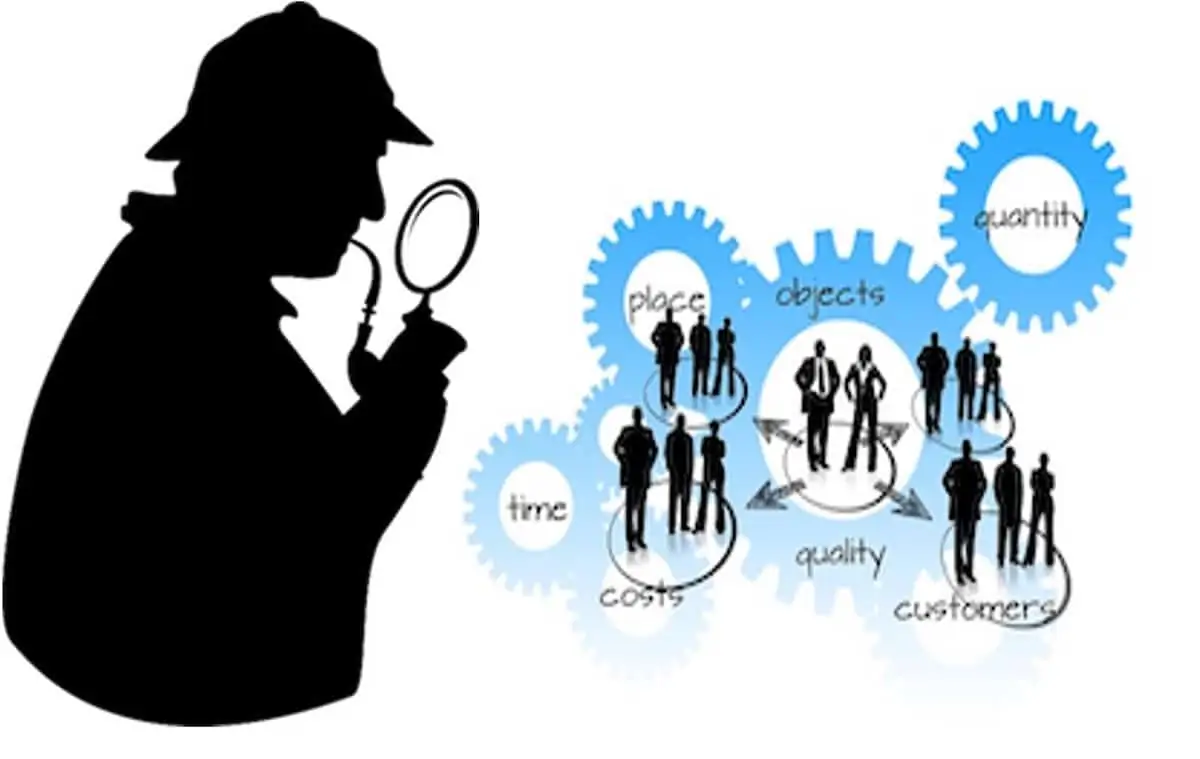The company had no formal S&OP (Sales and Operations Planning), or SIOP (Sales, Inventory and Operations Planning) process. The ability to forecast or track performance was sporadic and haphazard.
The CEO had mandated the implementation of a new S&OP process. An expert in S&OP implementation and operation had been hired to get this process in place.
But month after month the progress in getting a S&OP process in place was reported as either slow or stalled. Yet everyone on the Executive team voiced their support for S&OP. Still nothing happened.
What was really going on? What phantom was getting in the way of forward progress on getting S&OP in place?
This was another case for The Supply Chain Detective™.
The Compelling Need for an S&OP Process
The company had two dozen operating facilities employing thousands of employees spread around the world. Additionally there were dozens of customers across various industries for which we were providing a variety of different services. And the products that we processed for customers could similarly be shipped to innumerable customers or distribution centres anywhere around the world, on an order by order basis.
As such the ecosystem of suppliers, facilities, customers, carriers and end customers was sufficiently complex that it required a centralized, coordinated S&OP process. Planning at all levels, forecasting of resources, and financial reporting all required a formal S&OP process.
The new CEO recognized this enormous process gap in the company and immediately hired an S&OP expert and gave him the mandate to implement a new S&OP process across, and for, the entire company.
What’s the Hold Up?
It was shortly thereafter that I joined the company. The S&OP expert debriefed me on his progress of the prior few months.
He clearly had a business process and calendar defined and was in the midst of communicating roles, responsibilities and timing to all of the stakeholders involved. Every facility team (Plant Management, Finance, Operations), Sales, Supply Chain, Global Finance, and Operations all had a role to play on a predefined, regimented schedule.
On top of that all of the Executives vowed their support and need for the new process and theoretically gave marching orders to their teams to participate as required.
After a couple of months, despite promises to the contrary, the S&OP process was still not up and running. There was some input from some areas but the data was inconsistent and incomplete. We were no further ahead even though time was ticking by.
Everybody said they were committed to the new process. Everybody declared that they would participate as needed. But we were no further ahead. There was some unknown Phantom that was sabotaging getting our new S&OP process underway.
What was going on?
The Investigation
I started talking to each of the Executives to understand the messaging that they were giving their respective teams. The CEO was unequivocal … we needed S&OP implemented and we needed it implemented now. We would work out any kinks along the way but we had to get started. There was no problem with him.
But in talking to the other Executives it was clear that they were certainly saying the right words but they had less conviction than the CEO. When they talked with their teams they told them to cooperate but there was no real pressure or urgency. As such it became easy for people to say that they were too busy and they would get to it later. As a result some teams were providing inputs on time and others were more lackadaisical.

Further the Sales team had historically independently received and managed all forecasts from their individual customers. Every customer provided inputs on their own schedule and with no discipline. Sometimes we would get data and other times we wouldn’t.
The Sales team was so consumed with not rocking the boat with customers that they would never press them for forecast information. This not only impacted the S&OP process implementation but it invariably put the Operations team and Supply Chain team under tremendous pressure to respond to last minute, unforecasted customer demand changes.
More detailed discussions with each of the Sales teams revealed that there was also a certain amount of passive aggressive blocking going on for the new S&OP process. Many Sales people viewed this as a loss of control on their part and the demand for greater accountability was a sign of a loss of responsibility.
They viewed the change as being forced down their throats and it put them on the defensive. They were working subversively to stall implementation of the process. The Phantoms were at work.
The Operations teams were in varying states of readiness. Some facilities were ready, willing and able. Others hadn’t even heard of S&OP before so they were lost as to expectations and really needed a lot of education and hand holding until they became comfortable with the process.
And finally we talked with the newly hired S&OP expert. He knew S&OP technically though and through. But being new to the company he was treading somewhat lightly with some of the process blockers as he tried to be sensitive to office politics. He was also less experienced in driving the cultural changes needed to make this kind of process impact which caused some of the blocking activity to persist as opposed to getting resolved.
Clearing out the S&OP Spectres!
Once we had talked with everyone in the organization we had a better understanding of all of the inhibitors and hurdles that were in our way. We communicated an edict that we would have the entire process up and operational within one month.
In the intervening weeks we set about to address all of the issues. Education was reinforced. Concerns about loss of control and responsibility were discussed head on so that we could explain that we were giving people a bigger audience and more responsibility. Accountabilities were outlined to ensure that no one was undermined. All Human Resources concerns were discussed.
And most importantly we emphasized the focus on team. With a new S&OP process everyone would be working together as a total company team using one version of the truth. Any issues with data or assumptions were addressed in our monthly S&OP meetings and resolved on the spot.
Everyone from every facility and every function had an audience at the same time and as a result of the monthly S&OP process drove a level of common understanding and synchronization unprecedented in the history of the company.
Our ability to forecast, plan, schedule, and execute increasingly improved to the benefit of all. Customers saw our ability to execute and be flexible increase. Our shareholders saw more precision in our forecast accuracy and financial projections. And our employees saw a greater level of productivity improvement.
Like any new process implementation there were going to be Phantoms in our way. We couldn’t see them but we knew they were there because they were getting in the way of our new process startup.
By investigating every aspect of the environment we were able to uncover these issues, resolve them, and move the business forward.
It just needed a little detective work!


S and OP specialist: He was also less experienced in driving the cultural changes needed to make this kind of process impact which caused some of the blocking activity to persist as opposed to getting resolved.
Changing the culture of the company is very difficult Here is an article I wrote: http://www.metaopsmagazine.com/how-to-transform-a-business-culture/